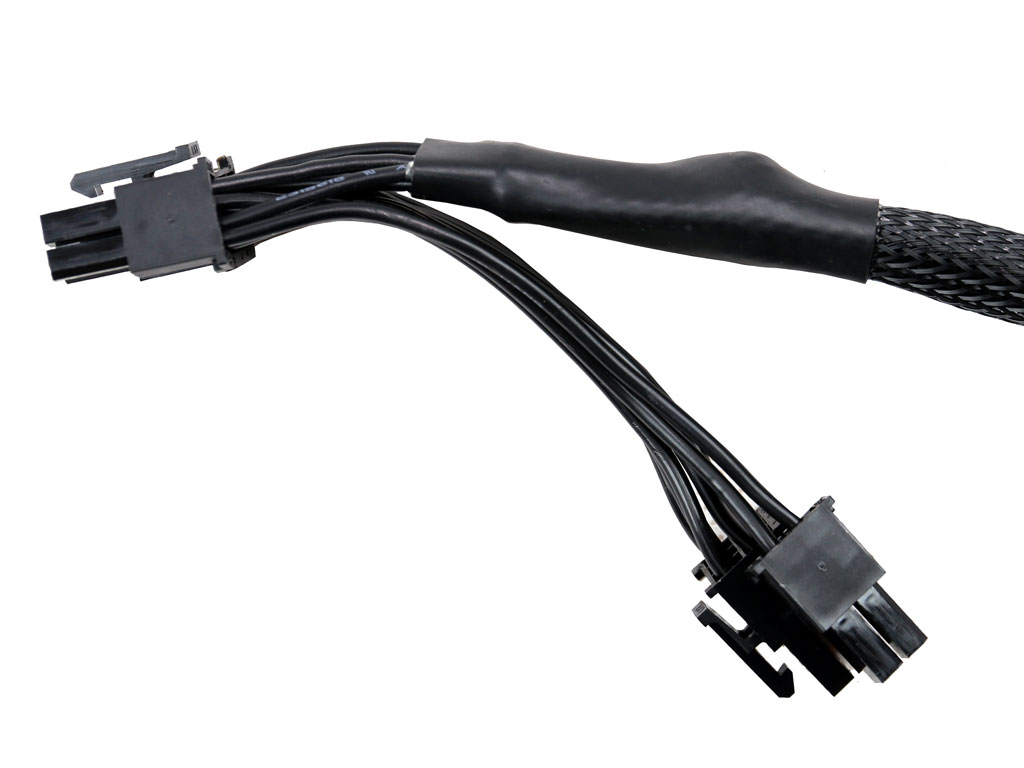Tom's Hardware Verdict
The E850 is a good PSU. However, it costs notably more than the SSR-850FX it's based on. The added digital controller doesn't improve performance, and it doesn't help keep the E850's noise down. On the other hand, NZXT's E850 uses higher-quality caps than Seasonic's original platform. And the data-rich bundled software should help enthusiasts monitor the health of their hardware. If only the readings it reported were more accurate...
Pros
- +
Efficient
- +
Good build quality
- +
Fully modular
- +
2x EPS & 6x PCIe connectors
- +
FDB fan
- +
Bundled software offers lots of information
- +
10-year warranty
Cons
- -
Expensive
- -
Noisy even in Silent mode
- -
Poor transient response on the minor rails
- -
Short distance between the peripheral connectors
- -
Inaccurate software readings
- -
Lacks power draw monitoring
Why you can trust Tom's Hardware
Features & Specifications
The E850 is NZXT's E-series flagship. It's an interesting power supply that achieves good performance, but is constrained by the analog platform it's based on. So, why pay $30 to $40 more for its digital control capabilities? If you are interested in monitoring the PSU through software and accessing information like rail voltages and power output, that small premium seems fair. If those extras aren't of use to you, though, the original Seasonic SSR-850FX is probably a better buy.
NZXT is well known for its cases. However, there was a time when it was also prolific on the PSU scene. Then it withdrew from the power supply market altogether. About a year ago, the company decided to collaborate with Seasonic for the release of its E family, consisting of three models with capacities ranging from 500W to 850W. The trio is based on a modified version of Seasonic's popular Focus Plus platform, which appears to utilize a semi-digital design. Nevertheless, performance doesn't change; the E850 matches the older analog-only version. And yet its price tag is about $30 higher than the corresponding Focus Plus Gold model.
Specifications
| Manufacturer (OEM) | Seasonic |
|---|---|
| Max. DC Output | 850W |
| Efficiency | 80 PLUS Gold, ETA-A (88-91%) |
| Noise | LAMBDA-S+ (35-40 dB[A]) |
| Modular | ✓ (Fully) |
| Intel C6/C7 Power State Support | ✓ |
| Operating Temperature (Continuous Full Load) | 0 - 50°C |
| Over-Voltage Protection | ✓ |
| Under-Voltage Protection | ✓ |
| Over-Power Protection | ✓ |
| Over-Current (+12V) Protection | ✓ |
| Over-Temperature Protection | ✓ |
| Short Circuit Protection | ✓ |
| Surge Protection | ✓ |
| Inrush Current Protection | ✓ |
| Fan Failure Protection | ✗ |
| No Load Operation | ✓ |
| Cooling | 120mm fluid dynamic bearing fan (HA1225H12SF-Z) |
| Semi-Passive Operation | ✓ (Selectable through software) |
| Dimensions (W x H x D) | 152 x 88 x 152mm |
| Weight | 1.64 kg (3.62 lb) |
| Form Factor | ATX12V v2.4, EPS 2.92 |
| Warranty | 10 years |
Since the E850 employs Seasonic's Focus Plus Gold platform, it naturally sports the same 80 PLUS Gold certification. On the Cybenetics scale, it scores ETA-A efficiency. The E850 also earns a LAMBDA-Standard+ noise rating, meaning that it's not particularly quiet.
All of the protection features we expect are included. Further, NZXT's cooling fan measures 120mm across and uses a fluid dynamic bearing that should last a very long time. This PSU does feature a semi-passive mode that can be deactivated through bundled software. It'd be even better if there was a physical switch to toggle this feature on or off, though.
Finally, the PSU's enclosure is relatively compact, and its 10-year warranty is ample.
Power Specifications
| Rail | 3.3V | 5V | 12V | 5VSB | -12V | |
|---|---|---|---|---|---|---|
| Max. Power | Amps | 20 | 20 | 70 | 3 | 0.3 |
| Watts | 100 | 840 | 15 | 3.6 | ||
| Total Max. Power (W) | 850 |
The minor rails offer up to 100W combined power, while the +12V rail delivers as much as 70A. It's easily able to handle a couple of high-end graphics cards. The 5VSB rail's 15W capacity should suffice, too.
Cables & Connectors
| Modular Cables | ||||
|---|---|---|---|---|
| Description | Cable Count | Connector Count (Total) | Gauge | In Cable Capacitors |
| ATX connector 20+4 pin (610mm) | 1 | 1 | 18-22AWG | ✓ |
| 4+4 pin EPS12V (650mm) | 2 | 2 | 18AWG | ✓ |
| 6+2 pin PCIe (680mm+80mm) | 3 | 6 | 18AWG | ✓ |
| SATA (500mm+100mm+100mm+100mm) | 2 | 8 | 18AWG | ✗ |
| Four-pin Molex (500mm+100mm+100mm) | 2 | 6 | 18AWG | ✗ |
| USB Cable (560mm) | 1 | 1 | 28AWG | ✗ |
| AC Power Cord (1360mm) - C13 coupler | 1 | 1 | 18AWG | - |
All of the E850's cables are long, but the distance between its peripheral connectors is just too short at 10cm. We'd at least like to see the four-pin Molex connectors 15cm from each other.
Get Tom's Hardware's best news and in-depth reviews, straight to your inbox.
The connector count is sufficient, including two EPS cables and six PCIe connectors on three cables. Moreover, with eight SATA and six 4-pin Molex connectors, you'll have little trouble adding hard drives or fans in the future.











MORE: Best Power Supplies
MORE: How We Test Power Supplies
MORE: All Power Supply Content
Current page: Features & Specifications
Next Page Unboxing Video & CAM Software
Aris Mpitziopoulos is a contributing editor at Tom's Hardware, covering PSUs.
